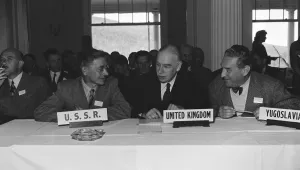International Security is America's leading peer-reviewed journal of security affairs.
Summary
Should the United States deploy conventional ballistic missiles (CBMs) in support of the prompt global strike (PGS) mission? Most important, do the political-military benefits outweigh the risks of CBM deployment? The United States, if it works to mitigate the risk of misperception and an inadvertent nuclear response, should deploy near-term CBMs in support of the PGS mission. The prompt response of CBMs would likely be sufficient to defeat many time-sensitive, soft targets, provided actionable intelligence was available. Near-term CBMs, those options capable of being deployed prior to 2013, would have the required attributes to defeat their targets: payload flexibility, throw weight, and accuracy. More specifically, the U.S. Navy's Conventional Trident Modification is a cost-effective, near-term PGS option that would mitigate the concerns of CBM opponents. The large-scale use of midterm and long-term CBMs against mobile targets and hard and deeply buried targets, however, will require a wider range of technologies that have yet to mature. Thus, the United States should continue investing in research and development for a broad portfolio of PGS options to cover the emerging target set.
Sugden, Bruce M.. “Speed Kills: Analyzing the Deployment of Conventional Ballistic Missiles.” Summer 2009
The full text of this publication is available in the link below.



